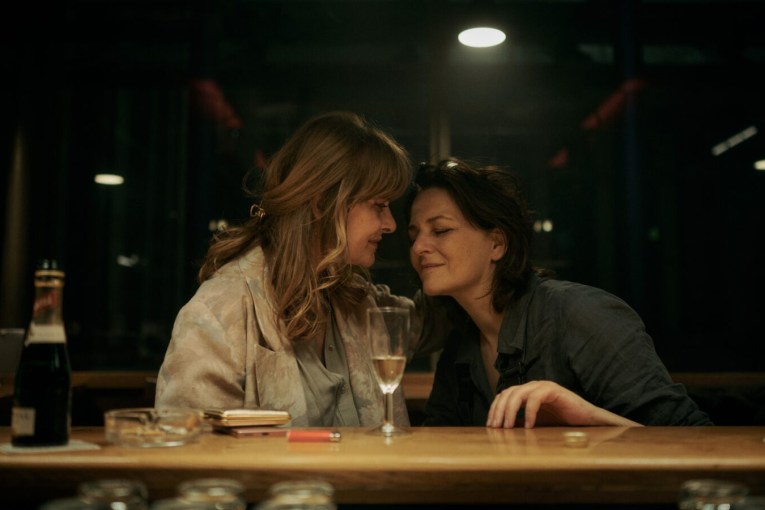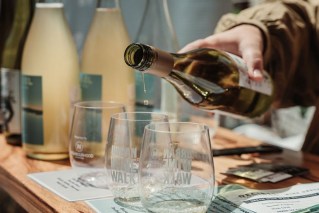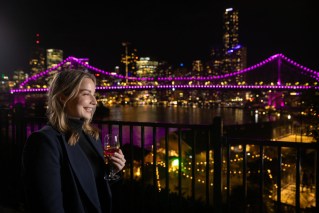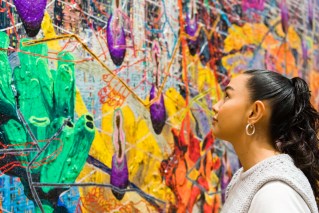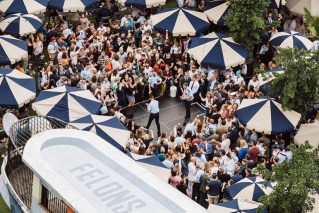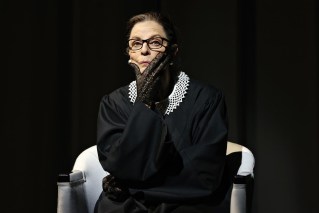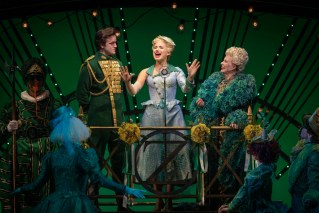Sister act: Pacific arts collection has grown so big it now runs all-year round
A stunning new exhibition at Brisbane’s Gallery of Modern Art shines a light on the art of women in our Pacific neighbourhood, writes Phil Brown
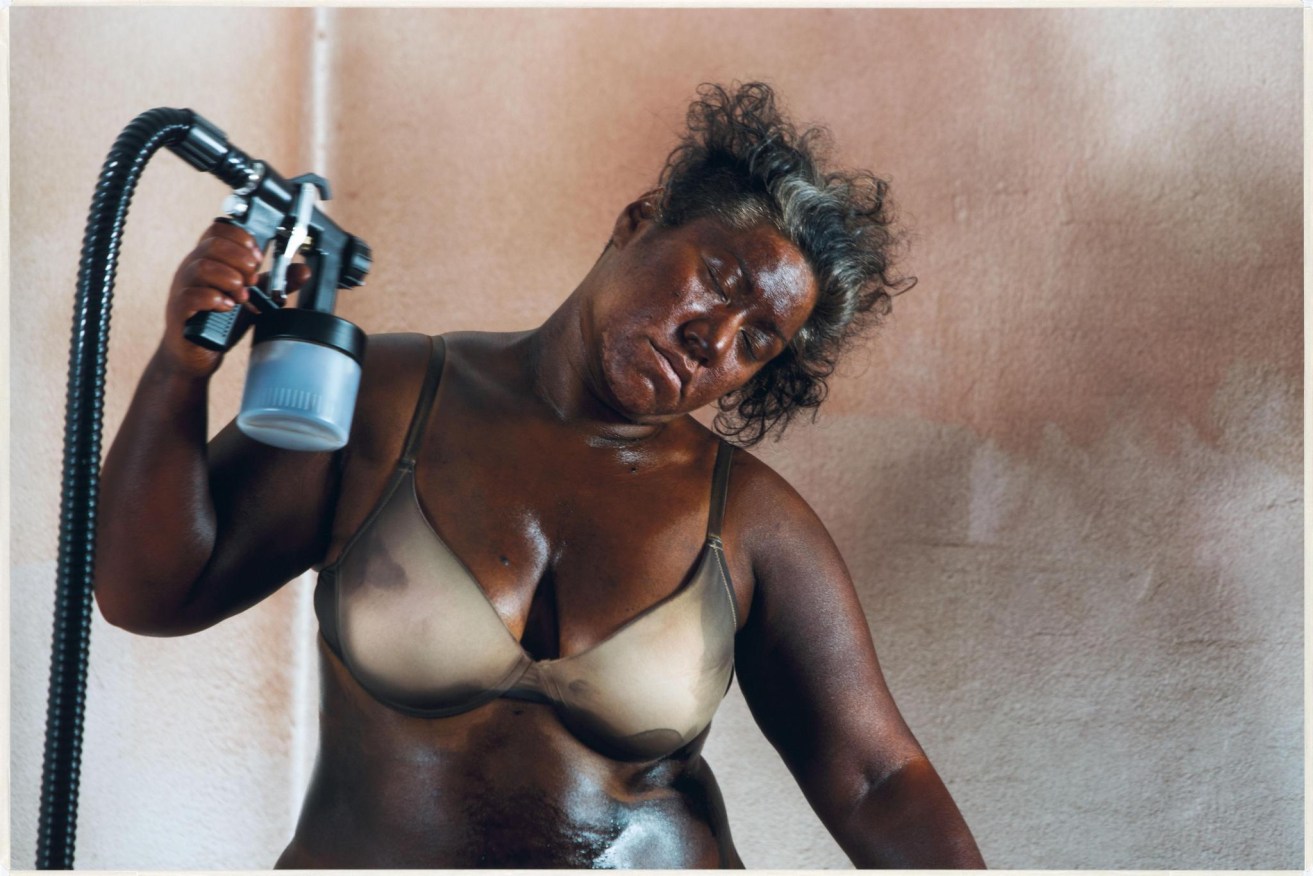
Tongan artist Latai Taumoepeau's "Dark Continent". Image: Zan Wimberley.
You’ve heard the expression “there goes the neighborhood” but let’s flip that. What about “here comes the neighbourhood”? That seems fitting for the exhibition sis: Pacific Art 1980-2023.
We see a lot of blockbusters of European art in galleries around Australia but the art of our own region is often neglected. Not at QAGOMA, however.
Their globally acclaimed Asia Pacific Triennial of Contemporary Art (APT) has been refocusing our attention closer to home for decades and the legacy of that and a dedicated and constant program of collecting means we have a stunning holding of work from our region and in particular, by women artists from these often-matrilineal societies. Added to our own First Nations collection, this is a substantial legacy being built by QAGOMA.
The APT began in 1993 and many works came into the collection because of it, but a significant number of the vibrant works of women artists from the Pacific region have been acquired through generous bequests made by two women – Jennifer Phipps, who died in 2014 and Jennifer Taylor who died in 2015.
Phipps made a significant bequest to QAGOMA to establish the Oceania Women’s Fund to support the ongoing development of women’s art practices in the Pacific. That fund was also aided by the bequest of architect and academic Jennifer Taylor. Such generosity is worth acknowledging and both women would be so proud of the current show.
There are many words for sister in the Pacific – sis, susa, toufefine, tuafafaine, sista and others but QAGOMA’s curator of Pacific Art, Ruth McDougall wanted to keep it simple. So, the exhibition is called ‘sis’ and everyone will get that.
It opens Saturday (August 26) and runs for a year will be shown in two halves, such is the size of our collection. When he first came to QAGOMA one of the first things director Chris Saines said he wanted to do was “work the collection harder” and this is a perfect example of that.
We have this remarkable collection so why not show it? And since these are our holdings and this is our own exhibition (owned by all of us) it is free and on upstairs at GOMA in galleries 3.3 and 3.4, The Marica Sourris and James C. Sourris AM Galleries.
Ruth McDougall is uniquely placed to curate an exhibition like this having, over the past two decades, travelled extensively in the region for work. “I have the best job in the world,” she declares and who would argue?
This is our neighborhood, Oceania, and we should know it better and part of her job is to help us do that by becoming familiar with the art of the region and, in turn, with the peoples and their cultures.
Featuring 162 works by 30 artists this first rotation reflects on practices of women from Bougainville, Tonga, Vanuatu, the Republic of Marshall Islands, Papua New Guinea and their diaspora. The exhibition includes textiles, ceramics, photography, moving image, sculpture, installation and performance.
One of the things you will notice as you browse through this first iteration is that traditional culture is the foundation of the art. Sure there are contemporary takes on things but at the root of it all is traditional art and culture which thrives despite the corrosive influences of colonialism and war on some island peoples.
I think a wonderful motif of resilience is the work of the Wotje Weavers of the Republic of the Marshall Islands who have turned the detritus of Japanese occupation during World War II into the most beautiful art. The major work, Flowers, utilizes copper wire unearthed by these women artists, a remnant of a difficult time now transformed by a sort of artistic alchemy.
Ruth McDougall explains that the women artists of the Republic of the Marshall Islands traditionally use flowers to wear and as gifts.
In the 1980s they began experimenting with using reclaimed copper wire to create their flowers.
“The wire is from electrical cabling that was buried underground when the atoll was used by 4000 Japanese military personnel and Korean forced labourers as a major seaplane base in the Pacific,” McDougall explains. “Today the resourceful Wotje women continue in their efforts to demilitarize their atoll by excavating and repurposing the Japanese cabling into the petals of their creations.”
McDougall points out that the work of Bougainville-born artist Taloi Havini speaks to the importance of women’s labour as well their matrilineal connections to the land. Her elegant sculptural work Beroana (shell money) II was completed in 2016 and is inspired by the long strands of shells (known as Beroana) created by women for use in ceremonial exchanges including weddings, reconciliations and funerals. This work comprises more than a thousand hand-made stoneware porcelain and earthenware shells hung to replicate the shape of the open-pit Panguna mine which still scars the local landscape.
There is a fascinating array of other work in this beautifully presented and well explained exhibition.
As well as glorying in the art the exhibition is edifying as Ruth McDougall explains in an essay about the exhibition.
“Works in ‘sis’ contribute towards the development of more nuanced understandings of Pacific cultures and traditions, and of how histories of colonization have played out in unique ways for individuals and communities across the region.
“We hope that visitors to ‘sis’ are inspired by the amazingly diverse and vibrant ways in which Pacific women seek to engage in histories and issues that we all, in some way, share.”
sis: Pacific Art 1980-2023, August 26 to September 8 2024, Gallery of Modern Art: qagoma.qld.gov.au
